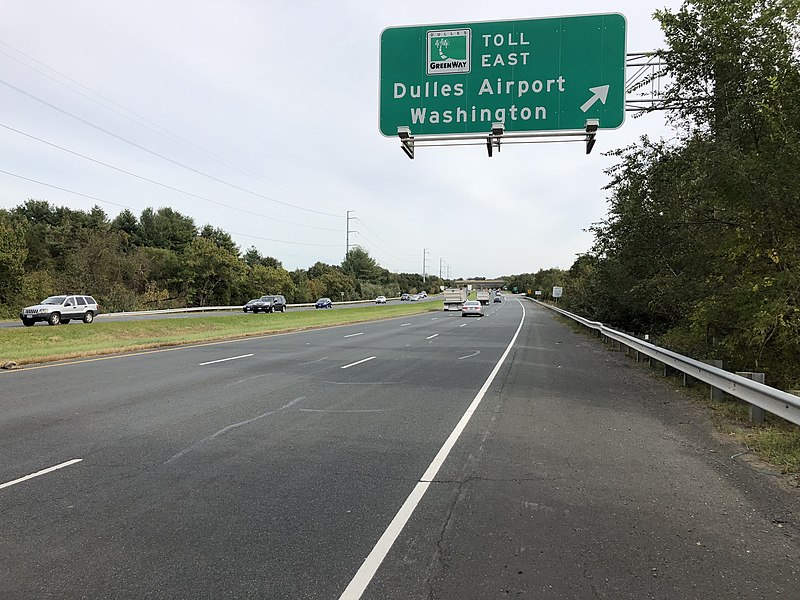Design Build Finance Operate Maintain DBFOM

|
| The view north along U.S. Route 15 and east along Virginia State Route 7 (Leesburg Bypass) at the exit for Virginia State Route 267 EAST (Dulles Greenway, Dulles Airport, Washington) in Leesburg, Loudoun County, Virginia. |
Contents |
[edit] Introduction
Design build finance operate maintain (DBFOM) is a project delivery method that allows a private sector contractor to design, build and finance a project and then to handle operations and facilities maintenance under a long-term agreement.
NB Operations refer to actions taken to achieve business objectives. Maintenance refers to actions taken to keep the asset in running order. Maintenance can be considered a subset of operations, since it ensures that assets retain a good appearance and operate at optimum efficiency.
[edit] How DBFOM works
DBFOM is sometimes used by public sector entities for infrastructure projects such as bridges, roads, transportation facilities and so on. Public sector clients tend to use DBFOM for two purposes:
- To allocate risk for the project to the private sector contractor.
- To allocate responsibility for the project to a private sector contractor with expertise in areas that the client lacks.
By bundling the components of the project, the public sector client relinquishes responsibility without surrendering ownership.
Financial considerations may be the initial rationale behind the decision to use the DBFOM method, since it may open up access to private capital while conserving public resources and reducing debt potential.
This project delivery method delegates all project duties to the private sector party in exchange for fee payments collected over an agreed period of time. Operating control reverts back to the public sector client once the final payment has been made.
Payments may come in the form of availability payments or shadow tolls. Under an availability payment arrangement, the public sector client makes payments once the project is ready to use. Under a shadow toll arrangement, the public sector pays a predetermined amount to the private sector contractor for operating and maintaining the project. In the case of highways, bridges, tunnels and other roadworks that shadow toll fee is usually based on the number of vehicles that use the asset.
[edit] Applicability
The DBFOM method is used for both new construction and renovation of roads, bridges and tunnels which generate tolls from users. It is commonly used in the United States.
In the state of Virginia, the Dulles Greenway is a 14-mile shadow toll highway project that was privately financed and constructed between 1993 and 1995. The initial agreement reverts operational responsibilities back to the state in 2036.
To finance the Greenway, funding was obtained through loans that were to be repaid with toll revenues. However, a lack of traffic failed to generate the projected amount, so tolls - and legal speed limits - were increased on the road to entice drivers to use the highway. Revenue continued to miss targets, prompting the state to renegotiate a 20 year extension to the original agreement.
[edit] Related articles on Designing Buildings Wiki
- Availability payments.
- Design build finance and operate.
- Design, build, finance, maintain DBFM
- Design build operate maintain DBOM.
- Design construct manage finance DCMF.
- Government Construction Strategy.
- Infrastructure.
- Private Finance Initiative.
- Procurement route.
- Public Private Partnership.
- Shadow tolls.
- Statutory authorities.
Featured articles and news
Professional practical experience for Architects in training
The long process to transform the nature of education and professional practical experience in the Architecture profession following recent reports.
A people-first approach to retrofit
Moving away from the destructive paradigm of fabric-first.
International Electrician Day, 10 June 2025
Celebrating the role of electrical engineers from André-Marie Amperè, today and for the future.
New guide for clients launched at Houses of Parliament
'There has never been a more important time for clients to step up and ...ask the right questions'
The impact of recycled slate tiles
Innovation across the decades.
EPC changes for existing buildings
Changes and their context as the new RdSAP methodology comes into use from 15 June.
Skills England publishes Sector skills needs assessments
Priority areas relating to the built environment highlighted and described in brief.
BSRIA HVAC Market Watch - May 2025 Edition
Heat Pump Market Outlook: Policy, Performance & Refrigerant Trends for 2025–2028.
Committing to EDI in construction with CIOB
Built Environment professional bodies deepen commitment to EDI with two new signatories: CIAT and CICES.
Government Grenfell progress report at a glance
Line by line recomendation overview, with links to more details.
An engaging and lively review of his professional life.
Sustainable heating for listed buildings
A problem that needs to be approached intelligently.
50th Golden anniversary ECA Edmundson apprentice award
Deadline for entries has been extended to Friday 27 June, so don't miss out!
CIAT at the London Festival of Architecture
Designing for Everyone: Breaking Barriers in Inclusive Architecture.
Mixed reactions to apprenticeship and skills reform 2025
A 'welcome shift' for some and a 'backwards step' for others.





















